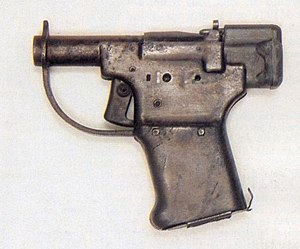I bought a good circular saw and hung it below a piece of 3/4 inch plywood. I added a couple of my own innovations, and it could do very precise work. I could also remove the circular saw to rip a panel too large for my table saw, and put it back into my table saw without the need to align it again. I no longer have that circular saw or the table I made. See how I made that table saw here.
But, I wanted to have a table saw again and wanted to utilize my Porter-Cable circular saw (Model # PC15TCSMK). This saw has a rigid base that does not flex easily, a 13 amp motor, and almost no run out to change the line of cut when the motor starts.
What I do not have is a lot of space to store a table saw, so I wanted a saw that almost stores flat. See the second photo. When I want to use the saw, I back my car out of our garage and set up my saw near the open door on folding sawhorses.
Materials
- 3/4 inch plywood 29 x 48 inches for the saw table
- 3/4 inch plywood for the fence and the face of the miter gauge
- Steel bar 1/4 x 2 inches and 1/4 x 3/4 x 24
- 1/4 inch and 5/16 inch threaded rod
- 8-32 machine screws about 1 1/2 inches in length
- Various nuts and washers
- 3/4 inch water pipe
- Angle iron from an old bed frame
- Steel fence post
- Steel electrical boxes and covers for a switch and an outlet
- Three 3/8 inch romex connectors
- 15 amp duplex outlet and 15 amp toggle switch
- Twist on wire nut
- Three prong male plug
- 16-3 rubber covered wire
- Round steel bar to make the collar in step 2
- Concrete reinforcement bar for the carrying handle
- 1/4 inch plywood
- Circular saw
- Radial arm saw
- Dado blade (adjustable)
- Framing square
- Folding rule
- Router
- Handheld Drill
- Drill press
- Welder
- Angle head grinder with a cutting wheel and a grinding wheel
- 3 pound hammer
- "C" clamps
- Plywood straightedge guides
- Pliers
- Screwdrivers
- Files
Step 1: First step: cut the miter gauge slots
The
miter gauge slots need to fit the miter gauge's steel bar precisely. I
used an adjustable dado blade with carbide tips to dial in the exact
width of the 1/4 x 3/4 inch steel bar I planned to use for the miter
gauge. I made test cuts in some scrap lumber. In the process I learned
two bars may be classed as 1/4 x 3/4 inch, but one is a bit narrower
than the other. I cut my slots to fit the piece of steel I would use.
I also have a radial arm saw now. One capability of a radial arm saw is using the edge of the table nearest the operator as a cutting guide together with a straightedge clamped to the bottom of the work piece. I described that process in this Instructable. I have a piece of 3/4 inch chipboard about 4 inches wide and 36 inches long. It has very straight parallel edges on both sides. I clamped it under the piece of plywood you see in the photo. It was positioned midway between the two slots in the table and was parallel to them. All I had to do was set the depth of the dadoes and hold the plywood firmly on the table while cutting one slot and then turning the plywood end for end to cut the second slot. The process is almost failure proof and the finished product is very accurate.
I also have a radial arm saw now. One capability of a radial arm saw is using the edge of the table nearest the operator as a cutting guide together with a straightedge clamped to the bottom of the work piece. I described that process in this Instructable. I have a piece of 3/4 inch chipboard about 4 inches wide and 36 inches long. It has very straight parallel edges on both sides. I clamped it under the piece of plywood you see in the photo. It was positioned midway between the two slots in the table and was parallel to them. All I had to do was set the depth of the dadoes and hold the plywood firmly on the table while cutting one slot and then turning the plywood end for end to cut the second slot. The process is almost failure proof and the finished product is very accurate.














